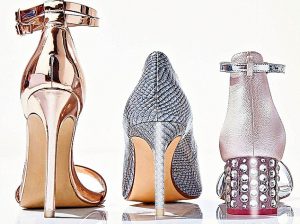At the Podiatry Practice Brisbane, one of the most common complaints we have with female patients is that they can’t fit their orthotics in high heel shoes. Although they may be happy with the symptomatic relief they are getting from their standard devices, they simply don’t fit into their dress shoes and sandals.
Let’s face it, shoes are something that most women love, and to limit yourself to only one or two pairs does seem unreasonable. I am known to wear high heels to work because the outfit I’m wearing looks better with a shoe with a heel. It’s always amusing watching the look on my patients faces when they see their podiatrist wearing orthotics in high heels. Not something they expect at all!
So can you have your cake and eat it too? The answer is yes providing you realise that your dress orthotic is your compromise pair. That is you wear it when you know that you aren’t going to be standing or exercising in them for any length of time. Additionally there are some conditions such as hallux limitus, active degenerative joint disease, sesamoiditis, plantar plate syndrome and capsulitis that simply do not like being put in a high heeled shoe. It doesn’t matter how good the orthotic is, full weight on your forefoot is going to hurt.
Patients with bunion deformities tend to go well in their heeled shoes with their dress orthotics providing the degenerative aspect of the deformity is not active. When choosing dress shoes to take a dress orthotics there are a few features that make life easier. A closed in heel counter and some form of strap to hold the shoe on is helpful. If using a sandal then the orthotic needs to be fastened in with a Velcro spot to hold it in place. I generally use a black material for these devices because then they blend in very nicely with the shoe. The modern popular style of a zip up the back of the heel works very well in providing support and hiding the device.
Need help? Don’t hesitate to call the Podiatry Practice with assistance in providing dress orthotics and advice and education on footwear so that you can continue to have footwear options.
Elouise Carmichael, Podiatrist







